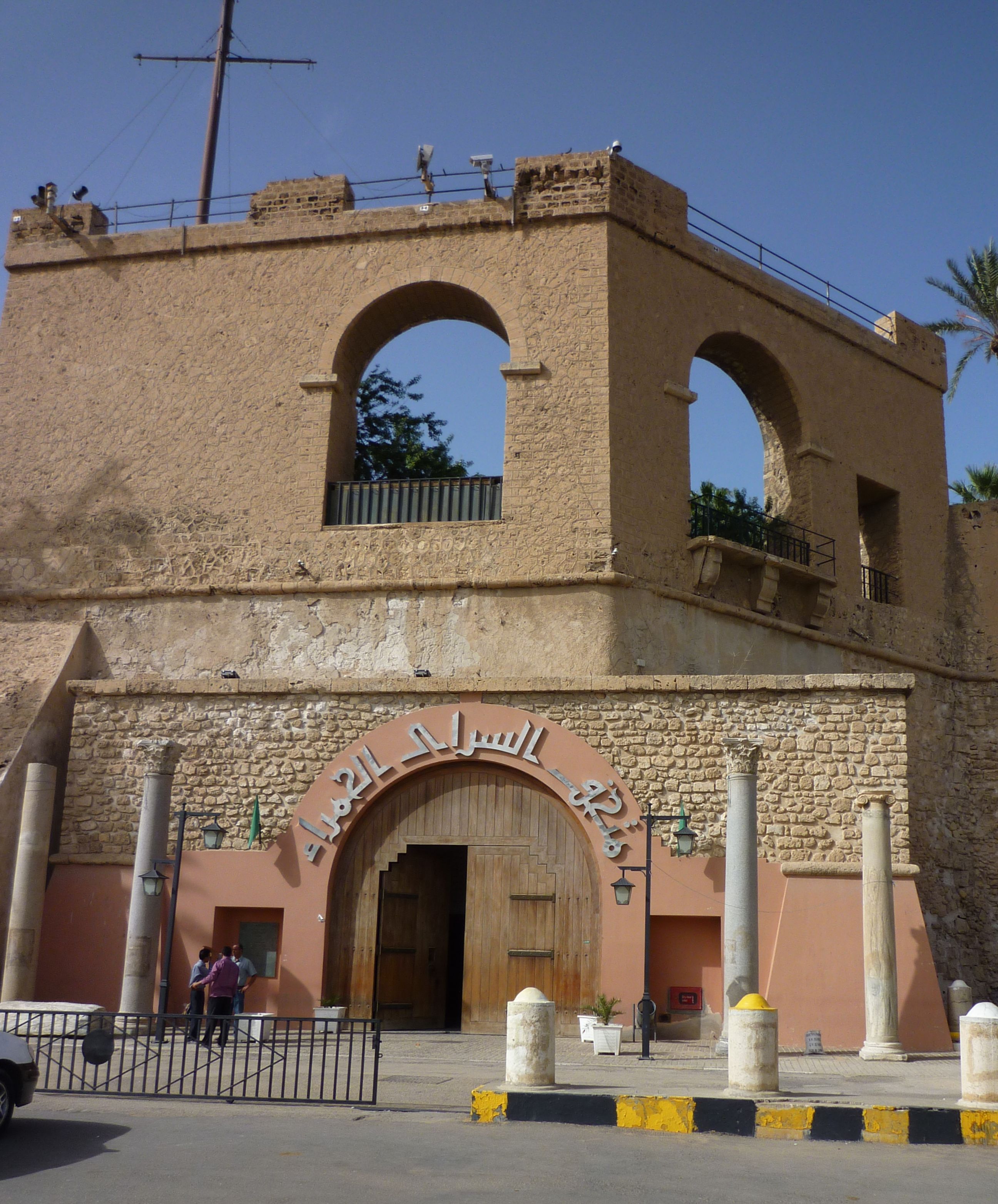Red Castle Museum on:
[Wikipedia]
[Google]
[Amazon]
 The Red Castle Museum, also known as As-saraya Al-hamra Museum ( ar, متحف السرايا الحمراء), the Archaeological Museum of Tripoli or Jamahiriya Museum, is a
The Red Castle Museum, also known as As-saraya Al-hamra Museum ( ar, متحف السرايا الحمراء), the Archaeological Museum of Tripoli or Jamahiriya Museum, is a
 The Red Castle Museum, also known as As-saraya Al-hamra Museum ( ar, متحف السرايا الحمراء), the Archaeological Museum of Tripoli or Jamahiriya Museum, is a
The Red Castle Museum, also known as As-saraya Al-hamra Museum ( ar, متحف السرايا الحمراء), the Archaeological Museum of Tripoli or Jamahiriya Museum, is a national museum
A national museum is a museum maintained and funded by a national government. In many countries it denotes a museum run by the central government, while other museums are run by regional or local governments. In other countries a much greater numb ...
in Libya
Libya (; ar, ليبيا, Lībiyā), officially the State of Libya ( ar, دولة ليبيا, Dawlat Lībiyā), is a country in the Maghreb region in North Africa. It is bordered by the Mediterranean Sea to the north, Egypt to Egypt–Libya bo ...
. It is located in the historic building known as the Red Castle of Tripoli
The Red Castle, in Arabic As-saraya Al-hamra (), sometimes also Red Fort or Red Saraya, is a major landmark on the waterfront of Tripoli, bordering Martyrs' Square. It has been the home of the Red Castle Museum (under various names) since 1919, a ...
( ar, السراي الحمراء), sometimes also referred to as Red Saraya, on the promontory above and adjacent to the old-town district with medina
Medina,, ', "the radiant city"; or , ', (), "the city" officially Al Madinah Al Munawwarah (, , Turkish: Medine-i Münevvere) and also commonly simplified as Madīnah or Madinah (, ), is the Holiest sites in Islam, second-holiest city in Islam, ...
Ghadema.
Designed in conjunction with UNESCO
The United Nations Educational, Scientific and Cultural Organization is a specialized agency of the United Nations (UN) aimed at promoting world peace and security through international cooperation in education, arts, sciences and culture. It ...
, the museum covers 5,000 years from prehistory to the independence revolution (1953) era. The museum has an entrance on historic ''As-Saha al-Kradrah'', the Martyrs' Square. The museum has been closed since 2011 due to security concerns.
History
The museum was established in 1919, when the colonial Italians in Libya converted a section of the castle to a museum to house many of the archaeological artifacts scattered across the country since prehistoric times. The building was renovated in the early 1920s on plans byArmando Brasini
Armando Brasini (Rome, 21 September 1879 - Rome, 18 February 1965) was a prominent Italian architect and urban designer of the early twentieth century and exemplar of Fascist architecture. His work is notable for its eclectic and visionary style i ...
, who designed its characteristic arches. The square around the castle was designed in the thirties by architect Florestano Di Fausto
Florestano Di Fausto (16 July 1890 – 11 January 1965) was an Italian architect, engineer and politician who is best known for his building designs in the Italian overseas territories around the Mediterranean. He is considered the most important ...
. When the British occupied Libya during World War II
World War II or the Second World War, often abbreviated as WWII or WW2, was a world war that lasted from 1939 to 1945. It involved the vast majority of the world's countries—including all of the great powers—forming two opposin ...
, the museum occupied the entire complex of the castle and in 1948 was renamed The Libyan Museum. The museum reopened to the public in 1988, renamed the Assaraya Alhamra Museum–Red Castle Museum, with "state-of-the-art" facilities.
In 2011 the museum was closed due to security concerns following the Libyan Civil War
Demographics of Libya is the demography of Libya, specifically covering population density, ethnicity, education level, health of the populace, economic status, and religious affiliations, as well as other aspects of the Libyan population. The ...
and Libyan Crisis (2011–present), subsequent unrest. The museum remained closed as of 2020. During the 2011 war, rebels entered the museum and a few items belonging to Muammar Gaddafi were damaged. The most valuable items were kept safe at another location by the museum staff. The remaining items relating to Gaddafi were placed in storage by the staff.
Collections
The museum was designed with different wings and floors for the exhibition of the distinct collections. * Prehistory of the Libyan region * Ancient Libyan tribes and traditions – the Maghreb Berbers: Garamentes, Tuareg people, Tuareg, and others * Libyan culture during the Phoenician–Punics, Punic–Ancient Greece, Greek–Roman Libya–Byzantine Empire, Byzantine–Ottoman Tripolitania-era traditions * Islamic architecture * Italian Libya,World War II
World War II or the Second World War, often abbreviated as WWII or WW2, was a world war that lasted from 1939 to 1945. It involved the vast majority of the world's countries—including all of the great powers—forming two opposin ...
, Libya#Independence, Kingdom and Libya under Gaddafi, Libyan independence and 20th-century Libyan heritage
* Natural history of the Libyan region
Gallery
See also
* Zliten mosaic * History of Islamic Tripolitania and Cyrenaica * History of Libya * List of museums in LibyaReferences
{{Coord, 32, 53, 45, N, 13, 10, 49, E, display=title Archaeological museums in Libya Forts in Libya History museums Museums established in 1919 Museums in Tripoli Natural history museums